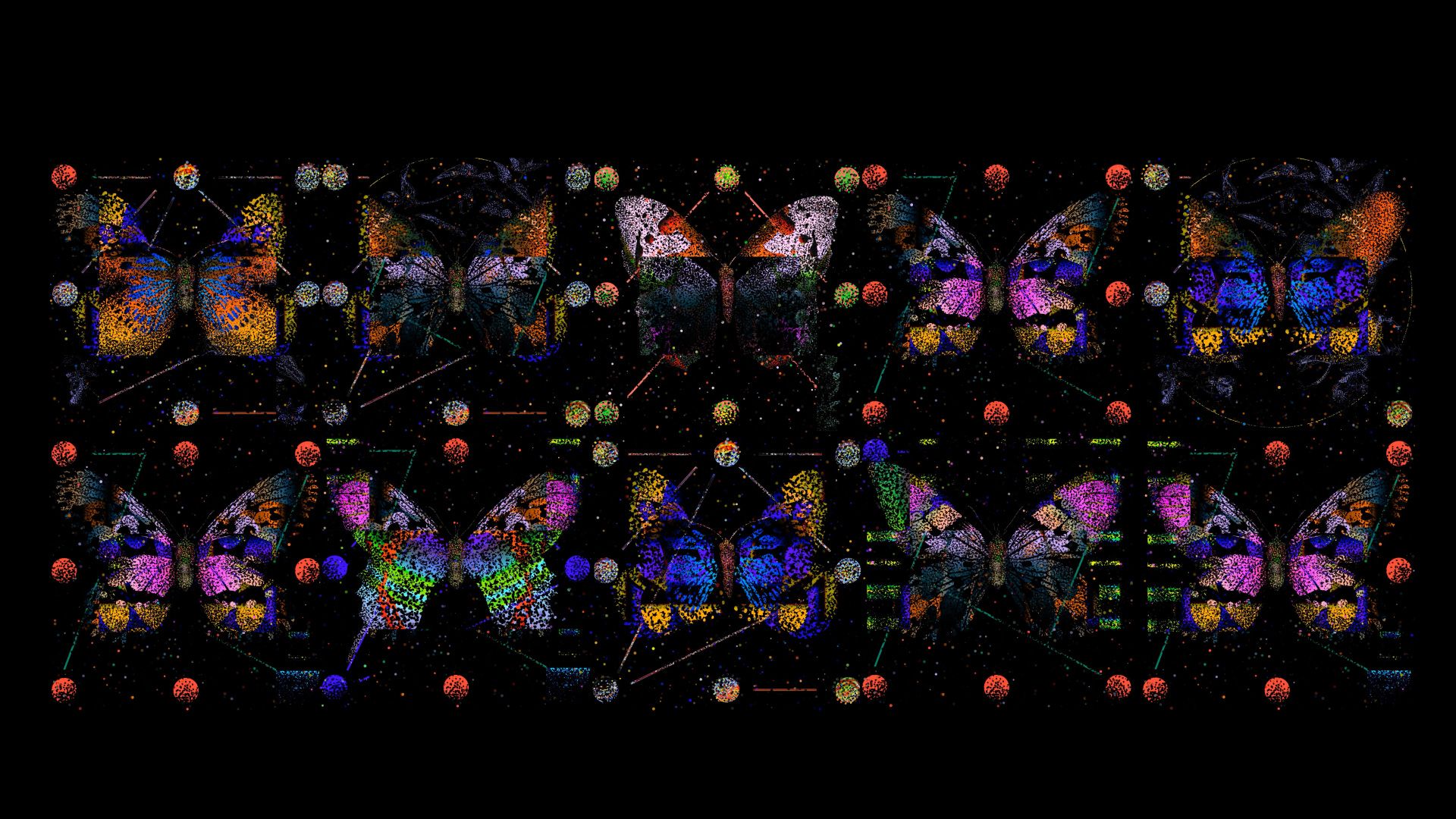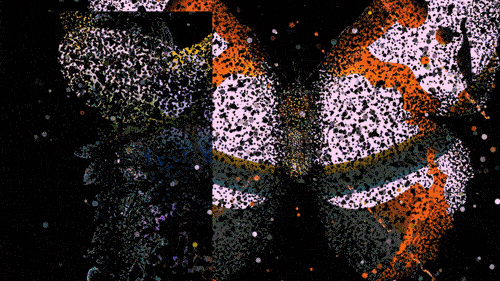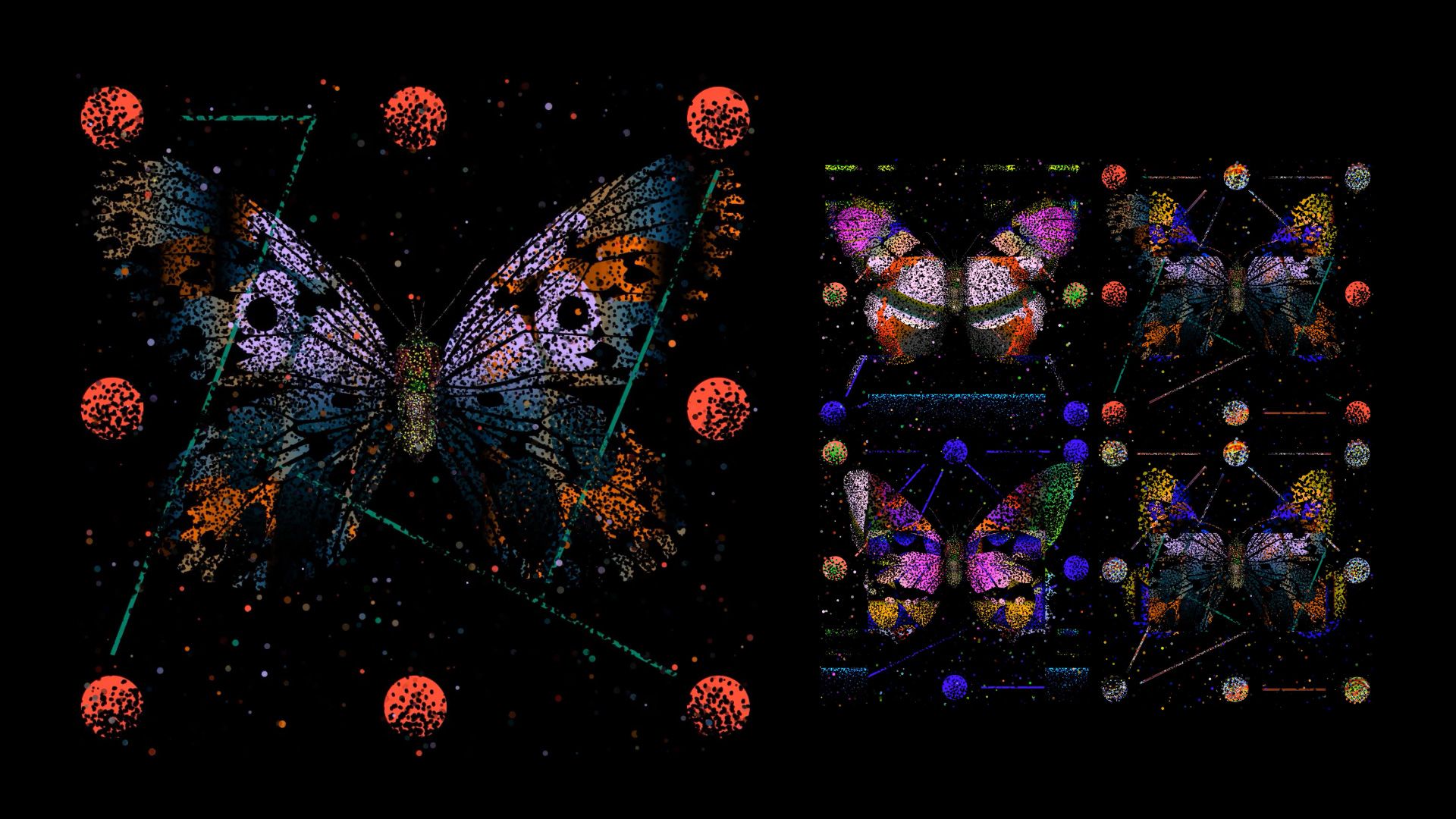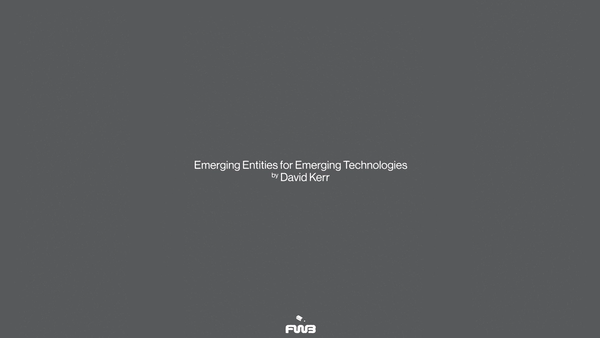- Ariel LeBeau
- Austin Robey
- David Blumenstein
- David Ehrlichman
- David Kerr
- Devon Moore
- Dexter Tortoriello
- Drew Coffman
- Drew Millard
- Eileen Isagon Skyers
- FWB Staff
- Greg Bresnitz
- Greta Rainbow
- Ian Rogers
- Jessica Klein
- Jose Mejia
- Kelani Nichole
- Kelsie Nabben
- Kevin Munger
- Khalila Douze
- Kinjal Shah
- Lindsay Howard
- Maelstrom
- Marc Moglen
- Marvin Lin
- Mary Carreon
- Matt Newberg
- Mike Pearl
- Moyosore Briggs
- Nicole Froio
- Ruby Justice Thelot
- Simon Hudson
- Steph Alinsug
- The Blockchain Socialist
- Willa Köerner
- Yana Sosnovskaya
- Yancey Strickler

Thu Oct 07 2021
Depending on how and when you first became acquainted with his work, Eric Hu is many things. Earlier in his career, the advertising and marketing worlds came to know him as one of the youngest winners of the ADC Young Gun award in 2010. Others had their entry point into Hu’s universe in 2016 through his work as Director of Design for SSENSE, the Montreal-based fashion platform-turned-cultural wavemaker.
By the time Hu assumed the role of Global Design Director for Nike’s Sportswear Brand Design team in 2018, he had firmly established his unique perspective on design, balancing aesthetic acuity with intellectual integrity. This identity is traceable across his now-defunct Tumblr account, where you'll find memes mixed with work samples, essays about the nature of graphic design, and answers to questions from aspiring designers on topics ranging from race to font IDs. Since leaving Nike, Hu’s studio continues to create for clients in fashion, music, architecture, technology, and the arts.
Now, Hu is leaving another mark on the trail he’s carved and bent in favor of his singular creative compass, with the release of his NFT project titled Monarchs. Comprised of 888 generative butterflies emerging “spontaneously from the ether,” the project touches on presence, beauty, and process— themes that that Hu has carefully considered while simultaneously navigating the questions that come with releasing an NFT project independent of a marketplace platform, such as how to set a fair and honest price on one’s artistic output. What appears top of mind for Hu with the release of Monarchs is an attempt to push through preconceived notions— his own and those of his peers —about NFTs, the value of art, and what it means to define your own parameters for success as a creative in Web3.

I’m curious about what motivated you to start working on an NFT project at all. Was there a specific moment over the past few months when you felt it was time for you to jump in?
I first saw the term [NFTs] late last year, and I was reading about it. The technology seemed really interesting, but at the time, I just wasn't into crypto yet. The whole thing seemed nebulous. And then what happened was basically a one-two punch.
I had known Trevor [McFedries] for a while and seen that he’d started Friends With Benefits. But again, I ignored it at first. But then Zora was amping up in February of this year and I saw people that I knew tweeting about it. They put out their manifesto about cryptomedia and I read it, and was like, “Oh man, this is kind of wild.”
I tweeted out into the open that I was interested in learning more about Zora, and I didn’t realize that one of the founders followed me. Dee [Goens] reached out and said, “Yo, we’re a fan of your work, do you want to talk about this stuff?” I had zero experience. Dee got on a video call with me and explained everything. He even helped me set up a MetaMask wallet.
Once I did that, I was hooked. The next thing was me thinking, “How do I get into this FWB thing?” Back then, it was only around $300 worth of tokens…
Remember those days...
So really, I got into this by accident. I was fortunate enough to know what it was and know from a technical level what the meaning of this space is, instead of how a lot of people see it, [which is] like, "Well, I can just right-click an image."
I knew enough to where I didn't have to get through that kind of mental leap. I minted a few things on Zora, on Foundation; a lot of that was re-purposing work that I’d done off-chain. I was minting things that I’d already created outside of the space. Monarchs is the first time where it feels like this work can only exist as an NFT.
When I saw one of the preview images of Monarchs, I remembered the work you’ve done for [food and design magazine] MOLD and flipped through my copies to find the caterpillars that you’d done for the article on Emergent Strategy, which covers a lot of topics that pertain to the Web3 space— interdependence, collective action, so on. It is interesting to think of Monarchs as an extension of that original work. Do you see them in that way?
I do see them that way. It's really interesting, I didn't even think about the Emergent Strategy connection. Around then, I had been experimenting with this idea of creating a sense of density while also feeling weightless at the same time. I was interested in the original posters for The Shining, which were done with a stipple effect, too.
When you have a white piece of paper and put ink on it, the black ink seems to rest on the white surface. The black ink feels like it is something, and the white paper feels like it represents nothingness. On a computer, you kind of have the opposite effect. A black screen is nothingness, and putting white or color pixels on a screen feels like something. So the idea turned into exploring stippling in a purely digital context; creating these dots and creating shapes out of them. It felt like particles emerging from the void. And that led me to thinking about insects and just life forms in general.
At first I thought I either wanted to paint bacteria or single-cell organisms, but then I wanted to paint bugs. What attracted me to paint insects was that their silhouettes are so iconic. Also, insects communicate so much through color; if you see a bright green neon bug, the implication is that it is venomous or dangerous. Then, thinking about certain kinds of insects and specific species, it became interesting to think that there’s so much variation in how they can look. Every ladybug is different in some way. So, by painting a series of the same kind of insect, it became a good way to hone a language. It's sort of like when you learn a new language, you have to do certain exercises. This visual style was like a new language for me.
It felt good to stick with one species and try to get as much variation as possible. I’d also started to think about a generative point of view; the fact that I grew up around technology and code has made me think of things like A/B tests and unit testing. All of these ideas came together and coalesced.

One thing that leaps out when looking at these pieces is that they’re quite clearly butterflies, but they’re also figurative. You might look at them and see a skull, a face, whatever emerges for you. It sounds like that concept was already present in the work; did taking a generative approach amplify that even more?
By limiting to one species, there’s less cognition required to digest what it is, so your mind can wander. If you showed a bunch of different insects together, you'd have to guess what each insect is and look more closely at the work. The approach allowed me creatively to push the limits of what was possible. Everyone knows these are butterflies, and that means I can push towards the edges of what a butterfly even looks like.
[With] my background being graphic design rather than illustration or any other artistic practice, I almost can't help but think about making sure that there's legibility. Of course I’ve got a body, I’ve got wings; other than that, fuck it. I can kind of go wild with the colors. If somebody says, “that's technically a moth,” I don't really have to care. The process allowed me to filter out a lot of pedantic things that normally cycle through my head like, “What makes this accurate?” or “What does this communicate?”
Creating NFTs also asks you to grapple with the financial side of cultural production in a different way than you might be used to. I’m curious what you’re feeling about the challenge of having to decide on a price for the works, and how you worked through that.
It's one thing to be a blue-chip artist in a gallery. But what if you’re set up at an anime convention selling drawings? You’re going to have to figure out a price for that. You can be on DeviantArt taking commissions; you’ve got to set a price for that. You’re an artist on the street doing pastels; you have to figure out a price for that.
Anyone creating art seriously has had to deal with it. The only people [for whom] it feels like a new experience is the emergent creative class. In the last decade or two specifically, there's been a huge rise in the abstraction of art in service of advertising. You're a graphic designer instead of an artist. Instead of a novelist, you’re a copywriter. And with that, you have a salary. You have an hourly rate. Those things shielded us from a difficult conversation with ourselves: “How much is our work worth?” It's easier to hide behind a salary than to sell an individual piece.
So I realize that the fact that I didn't have to think about that until now, and my discomfort with that, actually means I've had it pretty good. It was a difficult process, but I had the realization that this isn’t new, and that this blind spot is one that is helpful and healthy to question.
It puts the power and the responsibility back into the hands of the artist, essentially.
All that said, I tend to undercharge and undervalue myself, too. There [was] definitely the temptation to do that [with Monarchs], because for me it was, “Who's going to buy this?”
The price for Monarchs was arrived at through a lot of people telling me, “You should charge more.” I definitely had an anxiety spiral about it. [I was coming from] the design agency mode of work, [where] you price by deliverables. So I [thought], “If it's going to be priced this much, it's going to be a video and an image.”
I don’t think I needed to do that, but it’s my first project. I want it to be nice. The positive responses I got definitely helped me to be more resolute, stick to that, and trust myself more.

You’ve mentioned that you plan to use funds from the project to spin up an accelerator or incubator that supports marginalized artists. How do you envision that?
We’re working to have the details ironed out as soon as possible. I want to be careful about not over-promising things that we can’t deliver.
My art homies and design homies that have been curious about Web3 have turned away from it because of what they hear other people say— the environmental concerns, the financialization of everything, and the biggest complaint was that the art sucked. The realization I had is that this might be the project that gets them over the edge. Now they can connect the dots. I look back [on] how I didn’t join Instagram until really late because I was like, “I don’t want to do some weird Polaroid shit.” I didn’t see the potential. It’s easy to not see the forest for the trees, and miss the potential of new technologies.
NFTs still feel like they’re dominated by cis white male voices, and it is an economically difficult space. If [Monarchs] is successful and we benefit materially from this in a real way, it is only right to extend it to others. How do we cover people’s gas fees? How can we mentor and help them; give them access to my code base and assist them with configuring or tailoring a new smart contract for them to try and roll something out? That was the core thinking, and then came the push to formalize it.
That brings interesting questions in the Web3 world: figuring out how to set up the rubric for what kinds of artists we have the capacity to support, understanding in what ways someone has been marginalized or systemically kept out of certain spaces. Identity is real, but Web2 focused on pigeon-holing people. Web3 requires us to think more critically about how a person’s disadvantages might intersect, and we have a responsibility to clarify what we’re aiming for.
The organization we’re going to launch is called Decentralized Beauty. We'll be setting up a treasury with funds from Monarchs. We want to play an active role in mentoring and supporting artists. I’ve been exploring DAO tools like Orca to think about how community plays a role. I wouldn’t necessarily want to open things up to token-based voting, especially dealing with marginalized artists, because that’s something I don’t necessarily want to put up for discussion. There has to be someone at the helm; I want to maintain a curatorial aspect. Monarchs holders will, I think, have a front-row seat.
Speaking of which, you offered a pre-sale that automatically included FWB holders. You’re also planning to donate work to the FWB treasury— what’s the reasoning there?
A big part of it is that I don't think I'd be where I am if I didn't join FWB. This year has been crazy because in some ways I feel like a kid again. I’m in chat rooms, I'm building out non-client work, I feel like I'm in art school again.
So it is, on one hand, a token of appreciation. Second, I loved the idea that if Monarchs ends up being successful and FWB holds it, it means something long-term for the community. It’s a stake in the ground. FWB comes under a lot of scrutiny, and some of it is healthy. This is me putting a stake in the ground and saying, “This community has created a lot of value for me.”
I imagine it’s also an opportunity to have a piece situated within a community that really understands you and your work, and can serve as stewards for it.
Absolutely. Working with NFTs has made me think about things I never thought about before. When I’ve got my graphic designer hat on, I’m thinking about ephemera; nothing lasts at all. You make a logo, the client will inevitably want a new one. Websites go down. One of the heartbreaking things I’ve had to accept over my career is that there’s a lot of stuff in my portfolio that just doesn’t exist out in the world anymore. All I have is screenshots.
NFTs can be more resilient, and that comes with different affordances and challenges. It’s impossible to talk about NFTs without talking about the wealth creation that results from them. So that adds to the complexity of thinking long-term. You have to evaluate and be honest about what you want out of the experience of releasing a project. I purposefully made the Monarchs edition count small. The next project might not be so small, but for this one, I cared about edition count. I cared about creating a community.
Monarchs has definitely caused me to be more philosophical and reflective about things that I used to take for granted. As a commercial designer, I love my work and take pride in what I do, but the nature of that work is just so different than an artistic practice.
I don’t think a ‘collectible’ is the apex of artistic pursuits, but I do like the exploration involved in making something and having to define its cultural specificity; releasing it in a way that takes away the pretension of a gallery experience, but that still contains parts of you in that work… There are still a lot of things for me to figure out.
Jose Mejia is a writer and editor that used to run a design studio, sometimes codes, and believes in building things.
Original artwork by Eric Hu, graphics by metsä.


